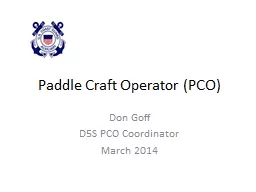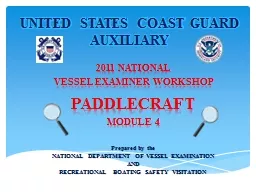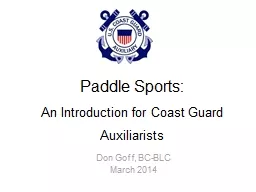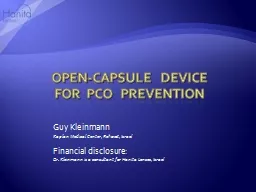PPT-Paddle Craft Operator (PCO)
Author : calandra-battersby | Published Date : 2016-03-11
Don Goff D5S PCO Coordinator March 2014 Overview What is a PCO Missions Paddle Craft OPFACs Qualification Process Training Testing Fitness Currency Maintenance Prepared
Presentation Embed Code
Download Presentation
Download Presentation The PPT/PDF document "Paddle Craft Operator (PCO)" is the property of its rightful owner. Permission is granted to download and print the materials on this website for personal, non-commercial use only, and to display it on your personal computer provided you do not modify the materials and that you retain all copyright notices contained in the materials. By downloading content from our website, you accept the terms of this agreement.
Paddle Craft Operator (PCO): Transcript
Download Rules Of Document
"Paddle Craft Operator (PCO)"The content belongs to its owner. You may download and print it for personal use, without modification, and keep all copyright notices. By downloading, you agree to these terms.
Related Documents














